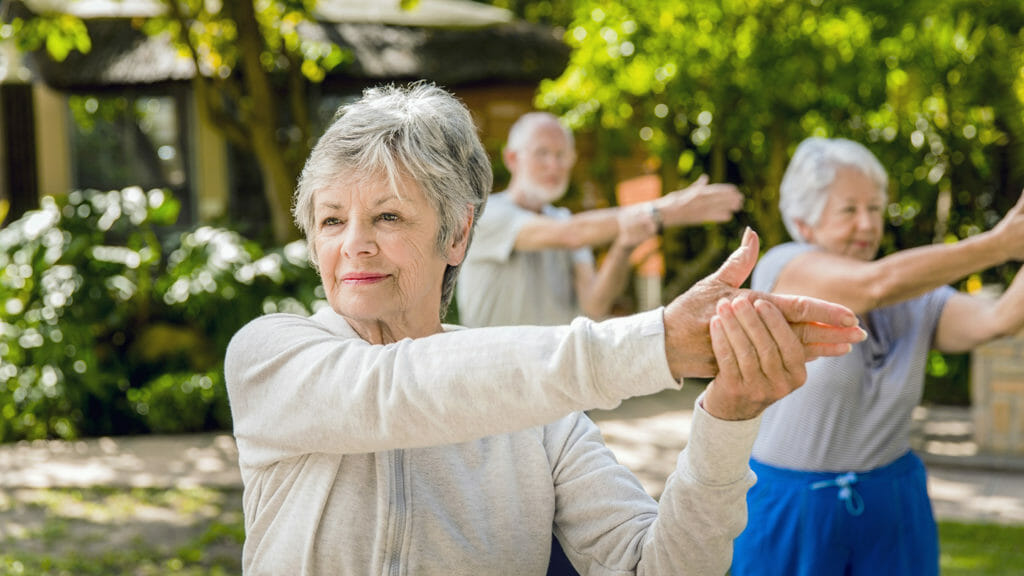
Wellness remains a top priority among senior living and care leaders, as well as community groups that serve older adults, according to the latest report from the International Council on Active Aging.
The ICAA Wellness Programs and Places Report 2024, released last week, reveals that in the past decade, senior living executives recognized the need to deliver services for active adults as well as those with physical limitations. In response, they developed wellness centers, upgraded community centers and offered a wider scope of programs and activities.
And they’re not done yet.
ICAA founder and CEO Colin Milner told McKnight’s Senior Living that the study revealed a significant shift toward wellness-focused communities, emphasizing a holistic approach to care and service delivery that prioritizes individuals’ well-being through more personalized and wellness-centered offerings. He added that 71% of senior living community respondents to the survey detailed in the report said that they aim to adopt such a model by 2030, highlighting lifestyle offerings as a key priority.
This year’s survey results reveal that organizations plan to expand wellness activities and programs (76%), increase budgets (54%) and hire wellness staff members (56%) at higher rates than in previous years.
“What’s particularly striking is the increase in investment and staffing for wellness, indicating a tangible commitment to this model,” Milner said. “Overall, these developments point toward an ongoing evolution in care delivery and community offerings toward a more holistic and technologically integrated approach.”
According to 519 overall responses from senior living communities, senior community centers, public agencies, fitness clubs and healthcare organizations, 74% called onsite wellness programs a top priority, whereas 76% said they planned to increase wellness programs and activities this year and next.
According to the report, 75% of the 358 senior living communities surveyed have a formal, structured wellness program — something ICAA said will appeal to health-conscious baby boomers and members of Generation X. And senior living executives are realizing that models need to change to position communities for the future, according to the report.
“Researchers and thought leaders point out that meaningful activities, social connections and support when needed are influencing occupancy and length of stay in senior living communities,” the report read. “As providers explore partnering with Medicare Advantage plans and hospitals, wellness staff who lead physical activity, health education and activities that enhance cognitive and intellectual health become critical to supporting the value of the community as a partner, and providing a source of data and outcomes health insurers require.”
Wellness programs offered in senior living communities, as well as in the general community, run the gamut, but most included opportunities for social and emotional well-being — including art and self-expression (81%), social gatherings (71%) and mindfulness (70%) — and physical activities, including fitness programs (84%). Social activities (71%) and spiritual programs (70%) also were popular, along with physical programs in the form of healthcare (68%) and environmental programming providing outdoor activities (68%).
Indoor spaces are seeing upgrades so that wellness offerings can be incorporated. Among senior living community respondents, 61% said they offered a cafe or juice bar, and almost half (46%) reported having a separate wellness center.
But wellness also is moving outdoors, a trend promulgated by the COVID-19 pandemic, Milner said. Outdoor fitness / exercise trails are available at 49% of senior living community participants, 31% offer meditation gardens and 30% reported having tennis or pickleball courts among their amenities.
Technology also is an important component of wellness-centered organizations. Milner said the focus on virtual reality is growing for both residents and staff, offering experiences, training and social connections.
“This trend mirrors the rise of voice-activated solutions in recent years,” he said.
Senior living communities also are opening their doors to the greater community to maximize the return on their wellness investments: 23% of respondents said they invite non-residents into their communities as paying guests. The strategy is a win-win, providing marketing to potential future residents and positioning communities as good neighbors who share their resources, according to the report.
“Wellness is the thread that ties together mission, services, people and programs,” the report read.
ICAA introduced a wellness audit tool in 2022 to help the senior living industry identify its wellness-related strengths and weaknesses.
The new report is available for purchase on the ICAA website.


